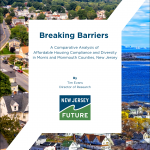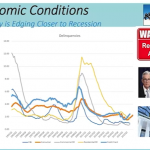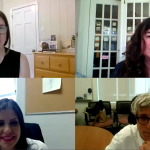New Jersey Future Blog
Population Growth Slows in NJ, Nationally
December 21st, 2010 by Tim Evans
One of the headlines that has already been mentioned repeatedly in news stories about the new 2010 Census national and state population totals is that the country’s rate of growth in the 2000s — 9.7 percent — is its slowest rate of growth over a decade since the Great Depression (the US population grew by only 7.3 percent in the 1930s).
Interestingly, this is not true for New Jersey, which grew more slowly in the 1970s (only 2.7 percent) than in either the 1930s (2.9 percent) or the 2000s (4.5 percent).
In fact, only 6 of the 50 states mimic the national pattern of growing faster in the 2000s than in the 1930s but slower than in any other decade since the 1930s: Arizona, Nevada, New Hampshire, Vermont, Virginia, and Washington.
New Jersey is not alone in having a 1970s growth rate that was lower than its 2000s growth rate. Other states for which the 1970s were the slowest-growth post-Depression decade include: Connecticut, Delaware, the District of Columbia, Maryland, Massachusetts, New York, and Rhode Island. The 70s were a dark time for the Northeast, apparently.
Despite the national slowdown, a handful of states actually experienced a higher growth rate in the 2000s than in the 1990s: Connecticut, D.C., Hawaii, Maine, North Dakota, Pennsylvania, South Carolina, West Virginia, and Wyoming.
New Jersey’s 2000s growth rate of 4.5 percent ranks it 37th among the 50 states. New Jersey grew faster than most of its New England and Mid-Atlantic neighbors (Maine, Pennsylvania, Massachusetts, Vermont, New York, and Rhode Island) but lagged Connecticut, New Hampshire, Maryland, and Delaware. One state — Mississippi — had grown faster than New Jersey in the 1990s but grew more slowly in the 2000s. On the other hand, five states grew more slowly than New Jersey in the 1990s but grew faster in the 2000s: South Dakota, Nebraska, Kansas, Connecticut, and North Dakota. (It should be noted that the first three of these nonetheless grew more slowly in the 2000s than they had in the 1990s; they just didn’t experience as dramatic a drop-off in growth as New Jersey did.)
While New Jersey’s growth rate in the 2000s was less than half that of the national rate (4.5 percent vs. 9.7 percent), five states had growth rates more than double the national rate, almost all of them in the Mountain West: Nevada (35.1 percent), Arizona (24.6), Utah (23.8), Idaho (21.1), and Texas (20.6). All five of these grew more slowly in the 2000s than they had in the 1990s, however.
As was already anticipated from annual population estimates, New Jersey dropped out of the top 10 most populous states since the last decennial Census, ranking as the 11th most populous state in 2010 as compared to # 9 in 2000. New Jersey was overtaken by Georgia in 2002 and by North Carolina in 2005.
Related Posts
Tags: Census news, Demographics, States


















The population of the U.S. grew 9.7 percent to 308.7 million since 2000…
Who wants to hazard a guess as to what proportion of that 9.7% are in the cart and not pulling the cart?
This is a poor use of numbers. Percent growth depends on the size of the base. In 1930, there were 123 million people, in 2010 308 million. A 10% increase from 2000 in 2010 (28 million) is more than double a 10% increase from 1930 to 1940 (12 million).
Much more interesting to look at actual numbers. From 1930 to 1940, the US population grew by less than 10 million people. That’s tiny. From 2000 to 2010, 27 million (3rd most people added in any decade since 1910; the first was from 1990 to 2000). If anything, the U.S. is growing faster than it has in the past.
New Jersey definitely is growing slower in 2010 – adding only 377,000 over the last decade, about 40 percent less than the average decade (625,000 people per decade).
Percentages are deceiving and distract from the reality of population growth, especially when looking over a long period of time.
[…] article, Population Growth Slows in NJ, Nationally, claims that “the country’s rate of growth in the 2000s — 9.7 percent — is its slowest […]
I’m not sure I understand the hostility toward percent changes. Sure, sometimes a very large percent change can be misleading because it’s actually only an artifact of starting from a very small base. But in other cases, only citing an absolute change can be just as misleading. For example, if we were talking about open space lost to development, would the same number of newly-developed acres be felt equally by New Jersey and, say, Nebraska, even though Nebraska is 10 times the size of New Jersey? I would think not, because that same number of developed acres would represent a much larger percentage of New Jersey’s remaining supply of open land.
People experience changes subjectively. Specifically, they perceive changes based on what was already there. The way you measure things as a comparison to what’s already there is by using percent changes. There’s a reason the Census Bureau (my former employer) reports so many changes in percent terms.